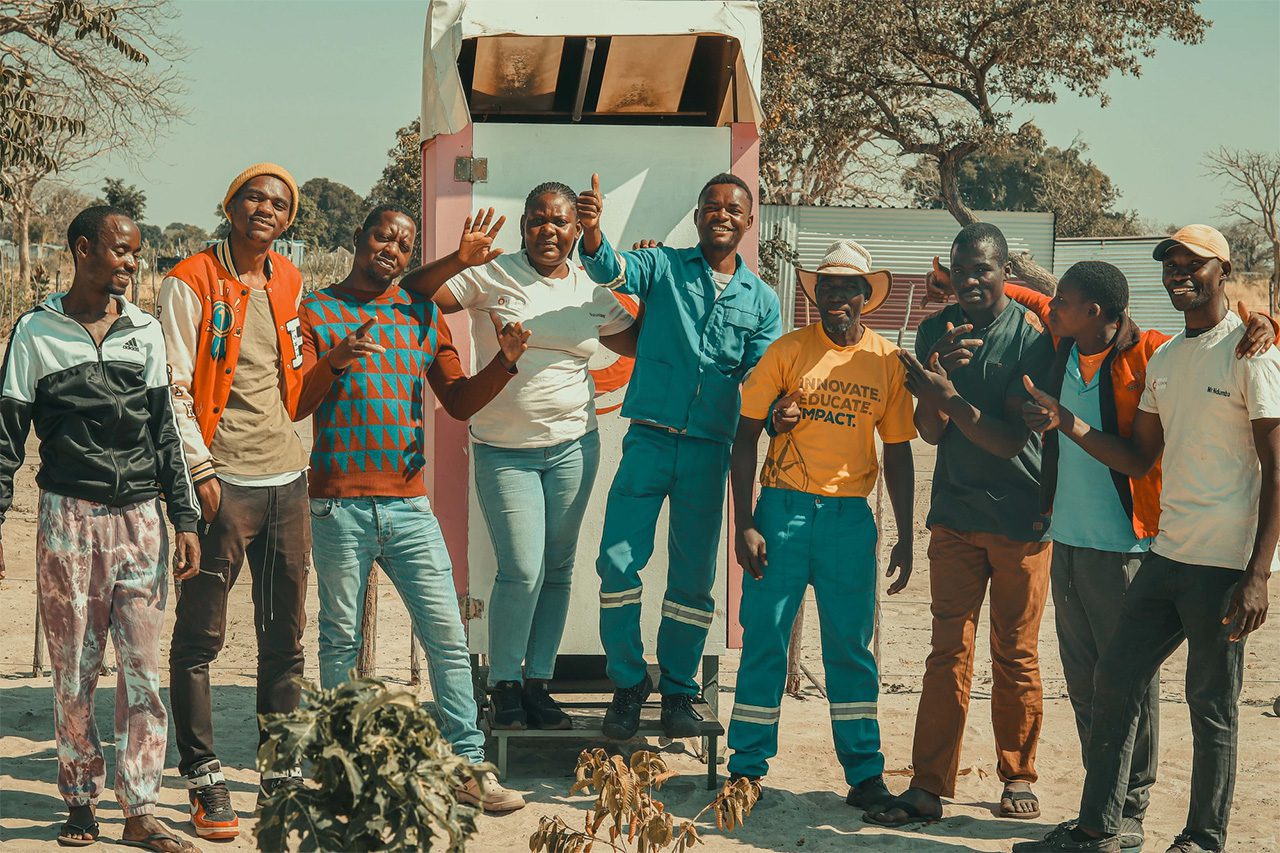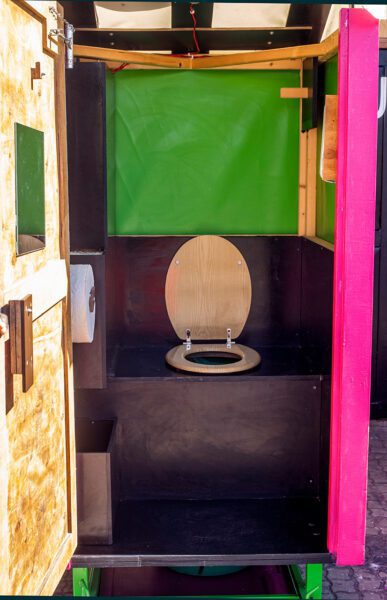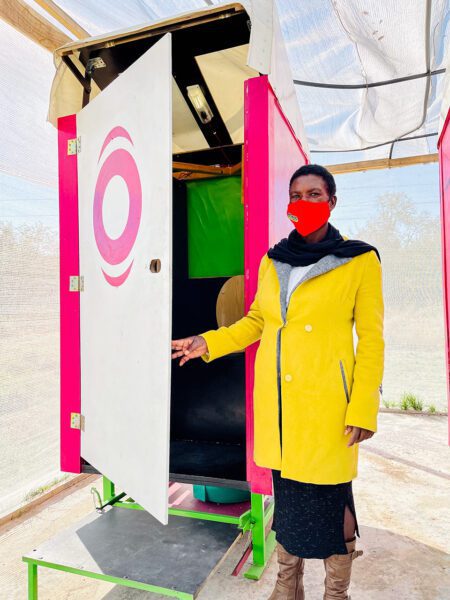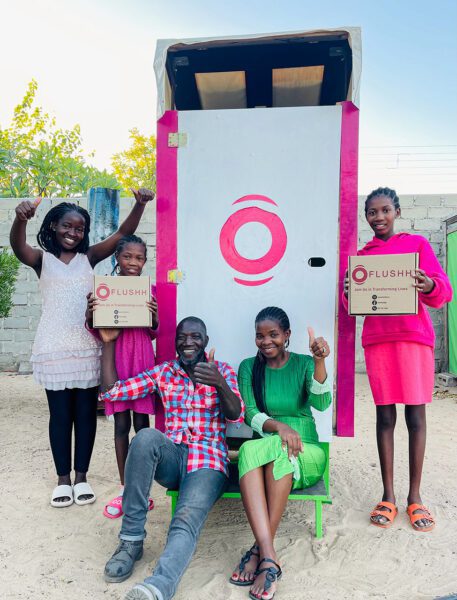The Algorithmic Classroom
South Korea’s ambitious experiment with AI in classrooms holds lessons for the world
Rethinking sanitation for underserved communities in Namibia

Image Courtesy of Flushh
SDG 6 makes it very clear: access to water and sanitation for everyone is a basic human right. In 2010, the United Nations declared sanitation a human right essential to the full enjoyment of life. However, the current reality looks very different. According to UNICEF, around 60% of the world’s population — 4.5 billion people — do not have access to a toilet at home. Zooming in on Namibia, a Southern African country, it has the sixth-highest rate of open defecation in the world, with 59% of the population lacking access to safely managed sanitation. In fact, 47% of people in Namibia practice open defecation, greatly increasing the risk of diseases such as Hepatitis E.
Why are toilets so important? It is not just a matter of having a private, hygienic space for our most basic needs — there is so much more at stake. When toilet waste is simply left in nature, it causes significant harm to both the environment and public health. According to the WHO, poor sanitation is linked to the transmission of diarrheal diseases such as cholera and dysentery, as well as typhoid, intestinal worm infections, and polio.

A look inside the Flushh Eco-toilets built from locally sourced materials; Image Courtesy of Flushh
There are other urgent problems linked to open defecation in the bush, particularly around gender-based violence. While official statistics in Namibia (UNFPA Namibia) indicate that 33% of women aged 15–49 have experienced physical, sexual, or emotional violence from their partner, the actual number of unreported cases is likely much higher. Societal stigma and fear prevent many women from reporting violence — including when it occurs as they seek privacy behind a bush. In the education sector, the lack of access to sanitation makes it extremely difficult for girls and young women to continue attending secondary school once they begin menstruating. According to the Namibia Education Policy and Data Center, 21% of secondary-school-age girls drop out, compared to 19% of boys. This highlights how inadequate sanitation is closely tied to both health and educational outcomes.
When we think about solutions, the local context is crucial. A method that works in one African country or in Europe (where people flush toilets with drinking water) does not necessarily work everywhere. Namibia is one of the largest and driest countries in sub-Saharan Africa, with persistent droughts that make water-based toilets impractical for communities already struggling to secure enough drinking water. The government’s attempts to build pit latrines in rural areas had detrimental consequences: not only were these latrines eventually rendered unusable by water scarcity, but the open holes also posed a serious danger to children. In 2021, The Namibian newspaper reported another tragic case of two toddlers drowning in a pit latrine.
This is why my social enterprise, Flushh, embarked on a mission to develop an innovative solution tailored to local conditions. First and foremost, our toilets need to be waterless, providing a sustainable, long-term option that enhances climate resilience in underserved communities. Our eco-toilets use sawdust as a recycled material to create an odorless experience without relying on harmful chemicals. Local experts and artisans construct the product using recycled, eco-friendly materials that are both practical and user-friendly. Waste is then safely collected by trained sanitation workers and transformed into biochar — an organic fertilizer smallholder farmers can use in the region.

Mrs. Christine showcasing her eco-toilet in Tjova village; Image Courtesy of Flushh
Second, these toilets should not be seen as a mere “product for the poor.” In communities where education about sanitation and hygiene is still hindered by societal taboos, toilets must also be appealing to users. While some might think it is impossible for a toilet to be “attractive,” creativity can make a difference. Flushh eco-toilets are colorful on the outside and include a solar lamp, mirror, bin for sanitary products, hand sanitizer, and a mobile phone charging station on the inside. Up to now, people in rural areas often prefer to save all their money for a mobile phone rather than invest in a toilet. By adding features that resonate with the community, acquiring a toilet becomes more desirable.
Other African countries have opted for concrete toilet structures. While this approach may work well in Kenya, Namibia’s local and historical context is quite different. Like neighboring South Africa, Namibia suffered under an apartheid regime that enforced strict segregation laws. The 1913 Land Act forced the local population onto rocky, arid land, where many still live today, while farmland was allocated to white colonialists. Today, there is considerable political debate about the redistribution of land in Namibia. In this context, a toilet solution must be portable so people can take it with them — much like any other piece of household furniture — if they return to their ancestral lands. This portability makes our eco-toilet a valuable asset for households and families.
One of the biggest challenges we face is making these toilets affordable for people in rural and remote areas with limited income. We must remember that water and sanitation are public goods, and it is also the government’s responsibility to work toward achieving SDG 6. That is why we see public–private partnerships as a promising path forward. The government should subsidize the purchase of toilets — acknowledged as a basic human right — from social enterprises. Just as the government invests in education and healthcare by building schools and hospitals, it must also contribute to providing sanitation for all.
At present, Flushh generates revenue through a multifaceted model that includes renting out toilets for community events. When large gatherings happen for weddings or funerals, families can co-finance the toilets. In the long term, Flushh aims to partner with the government and advocate for the policy changes needed to make sanitation accessible for everyone.

A Toilet in their own home. Mr. Kamwanga & family pictured in front of their eco-toilet; Image Courtesy of Flushh
Providing sanitation is about far more than constructing toilets. In Namibia, access to sanitation is inextricably tied to questions of race and gender, highlighting systemic social and environmental injustices. By building toilets, Flushh helps restore dignity to people who have suffered the effects of apartheid. Heeding local expertise is vital, as there is no one-size-fits-all solution. Ultimately, public–private partnerships will be essential to ensuring that these innovative solutions remain sustainable in the long run.
Related Content
Comments
Deep Dives

Featuring
Clarisse Awamengwi
IE Correspondent
July 17 - 12:00 PM EST

Featuring
Russell McLeod
July 24 - 12:00 PM EST
RECENT
Editor's Picks
Webinars
News & Events
Subscribe to our newsletter to receive updates about new Magazine content and upcoming webinars, deep dives, and events.
Become a Premium Member to access the full library of webinars and deep dives, exclusive membership portal, member directory, message board, and curated live chats.
At Impact Entrepreneur, we champion fearless, independent journalism and education, spotlighting the inspiring changemakers building the Impact Economy. Diversity, equity, sustainability, and democracy face unprecedented threats from misinformation, powerful interests, and systemic inequities.
We believe a sustainable and equitable future is possible—but we can't achieve it without your help. Our independent voice depends entirely on support from changemakers like you.
Please step up today. Your donation—no matter the size—ensures we continue delivering impactful journalism and education that push boundaries and hold power accountable.
Join us in protecting what truly matters. It only takes a minute to make a real difference.
0 Comments